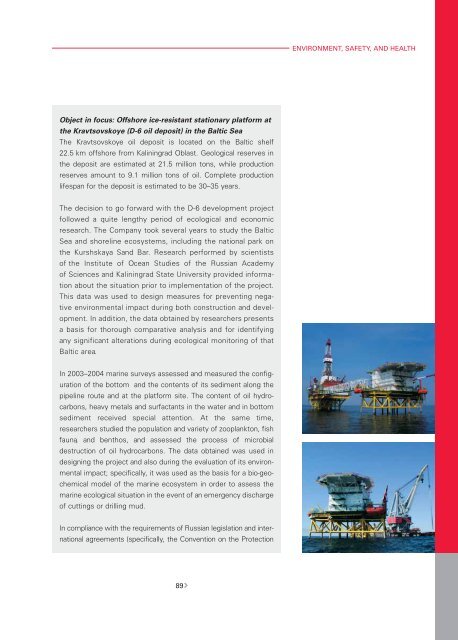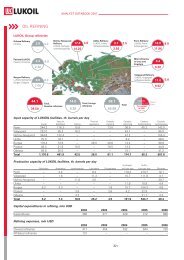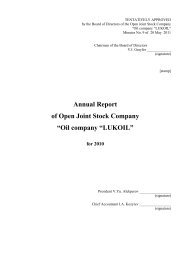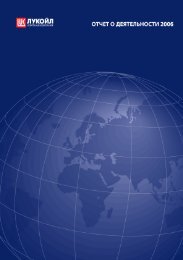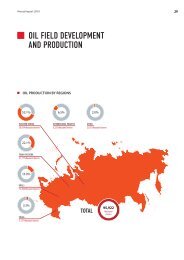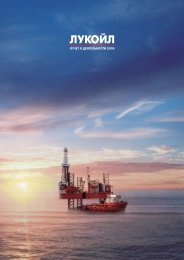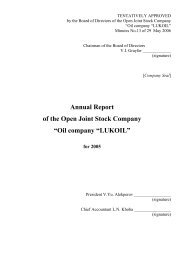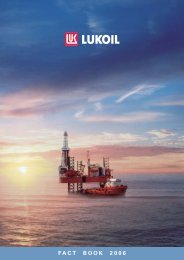Download Report (PDF; 3.90 Mb) - Lukoil
Download Report (PDF; 3.90 Mb) - Lukoil
Download Report (PDF; 3.90 Mb) - Lukoil
- No tags were found...
You also want an ePaper? Increase the reach of your titles
YUMPU automatically turns print PDFs into web optimized ePapers that Google loves.
ENVIRONMENT, SAFETY, AND HEALTHObject in focus: Offshore ice-resistant stationary platform atthe Kravtsovskoye (D-6 oil deposit) in the Baltic SeaThe Kravtsovskoye oil deposit is located on the Baltic shelf22.5 km offshore from Kaliningrad Oblast. Geological reserves inthe deposit are estimated at 21.5 million tons, while productionreserves amount to 9.1 million tons of oil. Complete productionlifespan for the deposit is estimated to be 30–35 years.The decision to go forward with the D-6 development projectfollowed a quite lengthy period of ecological and economicresearch. The Company took several years to study the BalticSea and shoreline ecosystems, including the national park onthe Kurshskaya Sand Bar. Research performed by scientistsof the Institute of Ocean Studies of the Russian Academyof Sciences and Kaliningrad State University provided informationabout the situation prior to implementation of the project.This data was used to design measures for preventing negativeenvironmental impact during both construction and development.In addition, the data obtained by researchers presentsa basis for thorough comparative analysis and for identifyingany significant alterations during ecological monitoring of thatBaltic area.In 2003–2004 marine surveys assessed and measured the configurationof the bottom and the contents of its sediment along thepipeline route and at the platform site. The content of oil hydrocarbons,heavy metals and surfactants in the water and in bottomsediment received special attention. At the same time,researchers studied the population and variety of zooplankton, fishfauna, and benthos, and assessed the process of microbialdestruction of oil hydrocarbons. The data obtained was used indesigning the project and also during the evaluation of its environmentalimpact; specifically, it was used as the basis for a bio-geochemicalmodel of the marine ecosystem in order to assess themarine ecological situation in the event of an emergency dischargeof cuttings or drilling mud.In compliance with the requirements of Russian legislation and internationalagreements (specifically, the Convention on the Protection89


